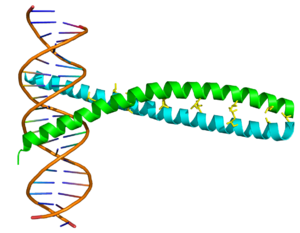|
NCCN Flash Update sent March 25, 2013
NCCN has published updates for the NCCN Clinical Practice Guidelines in Oncology (NCCN Guidelines®) for Acute Lymphoblastic Leukemia (ALL). These NCCN Guidelines® are currently available as Version 1.2013.
For the complete updated versions of the NCCN Guidelines, the NCCN Drugs and Biologics Compendium (NCCN Compendium®), and the NCCN Chemotherapy Order Templates (NCCN Templates®), please visit NCCN.org.
To access the NCCN Biomarkers Compendium™, please visit NCCN.org/biomarkers.
To view the NCCN Guidelines for Patients®, please visit NCCN.com.
Free NCCN Guidelines mobile apps for iPad and Android are now available! Visit NCCN.org/mobile/tablet.
|
A blog about research, awareness, prevention, treatment and survivorship of Breast Cancer and all cancers, including targeted scientific research and a grassroots approach to increase screening for cancer, especially in the low income and under-insured population of El Paso, Texas, with a view to expand this new health care model to many other 'minority' populations across the United States and beyond
Showing posts with label pancreatitis. Show all posts
Showing posts with label pancreatitis. Show all posts
Monday, April 8, 2013
View all JNCCN CE Opportunities
Thursday, March 21, 2013
IXL Gene in pancreatic cancer
IXL, Intersex like cell, a survival regulator, located on 19q13,
note the q location of the amplicon ( a piece of DNA or RNA that is the source and/or product of natural or artificial amplification or replication events) the 10% rate of amplification is clearly higher than the usual few, with 5% of secondary amplification making this a clear Amplicon. Knocking down this stops cells in Go-G1 per Kuuselo et al. As the Component of the Mediator complex, it is a co-activator that regulates the transcription of nearly all RNA polymerase II-dependent genes which are at the origin of m-RNA formation. It puts this gene at the initiation complex. At the sole of enzyme fabrication, regulator fabrication, and formation of transcription factors. Tinkering with gene blocks transcription. That's it! Even splicing will in fact be affected to some extent.
This gene interacts with AP-1
and
In the field of molecular biology, the activator protein 1 (AP-1) is a transcription factor which is a heterodimeric protein composed of proteins belonging to the c-Fos, c-Jun, ATF and JDP families. It regulates gene expression in response to a variety of stimuli, including cytokines, growth factors, stress, and bacterial and viral infections.[1] AP-1 in turn controls a number of cellular processes including differentiation, proliferation, and apoptosis.[2]
AP-1 upregulates transcription of genes containing the TPA DNA response element (TRE; 5'-TGAG/CTCA-3').[1] AP-1 binds to this DNA sequence via a basic amino acid region, while the dimeric structure is formed by a leucine zipper.[3]
The gene atf2 is located at human chromosome 2q32.[2] ' (wikipedia
BELIEVE ME WHEN THEY SAY LEUCINE, THE MTORs ARE NOT FAR BEHIND!!!
note the q location of the amplicon ( a piece of DNA or RNA that is the source and/or product of natural or artificial amplification or replication events) the 10% rate of amplification is clearly higher than the usual few, with 5% of secondary amplification making this a clear Amplicon. Knocking down this stops cells in Go-G1 per Kuuselo et al. As the Component of the Mediator complex, it is a co-activator that regulates the transcription of nearly all RNA polymerase II-dependent genes which are at the origin of m-RNA formation. It puts this gene at the initiation complex. At the sole of enzyme fabrication, regulator fabrication, and formation of transcription factors. Tinkering with gene blocks transcription. That's it! Even splicing will in fact be affected to some extent.
This gene interacts with AP-1
and
AP-1 transcription factor
From Wikipedia, the free encyclopedia
Jump to: navigation, search
AP-1 upregulates transcription of genes containing the TPA DNA response element (TRE; 5'-TGAG/CTCA-3').[1] AP-1 binds to this DNA sequence via a basic amino acid region, while the dimeric structure is formed by a leucine zipper.[3]
SO HERE PANCREATITIS, ALCOHOL, VIRUSES AND OTHER STRESSORS FIND THEIR WAY TO THE PATHOGENESIS OF PANCREATIC CANCERS!
It is also connected to
CUTL1
and it needs CUTL-1 now to have muscle, but unleash the powerful regulator it encloses. It may use this regulator to silence other genes that may lead to apoptosis. The IXL gene is a strategist in its advancement of pancreatic cancer. This is a major target!
And 3rd, and not the least
it interferes with ATF2
'This gene encodes a transcription factor that is a member of the leucine zipper family of DNA-binding proteins. This protein binds to the cAMP-responsive element (CRE), an octameric palindrome. The protein forms a homodimer or heterodimer with c-Jun and stimulates CRE-dependent transcription. The protein is also a histone acetyltransferase (HAT) that specifically acetylates histones H2B and H4 in vitro; thus, it may represent a class of sequence-specific factors that activate transcription by direct effects on chromatin components. Additional transcript variants have been identified but their biological validity has not been determined.[1]The gene atf2 is located at human chromosome 2q32.[2] ' (wikipedia
BELIEVE ME WHEN THEY SAY LEUCINE, THE MTORs ARE NOT FAR BEHIND!!!
Labels:
alcohol,
ATF2,
cAMP-responsive,
chromatin,
crbcm,
CUTL1,
HAT,
histoone acetyltransferase,
IXL gene,
leucine zipper,
pancreatic cancer,
pancreatitis,
pathogenesis,
stressors,
viruses
Subscribe to:
Posts (Atom)
